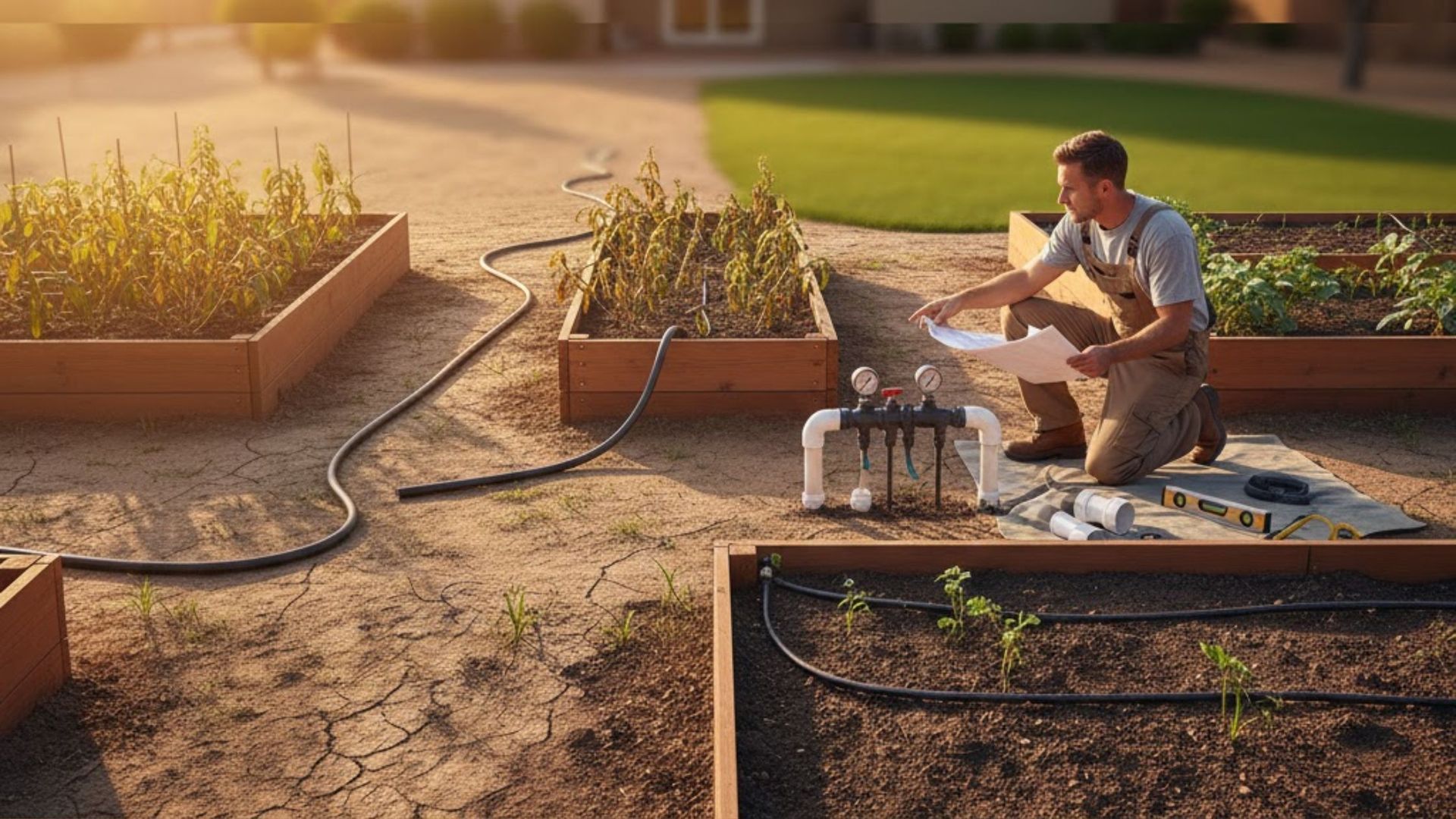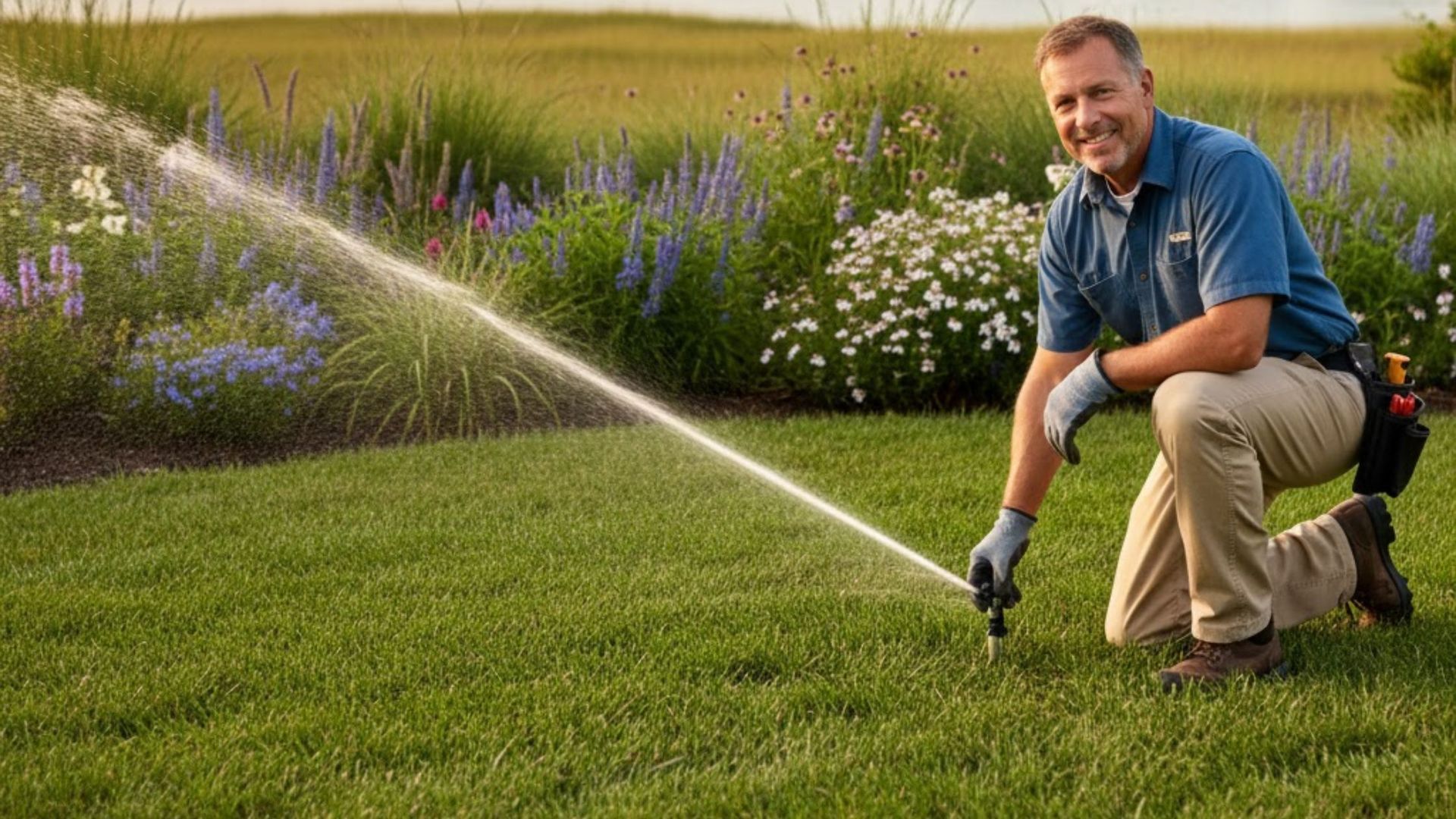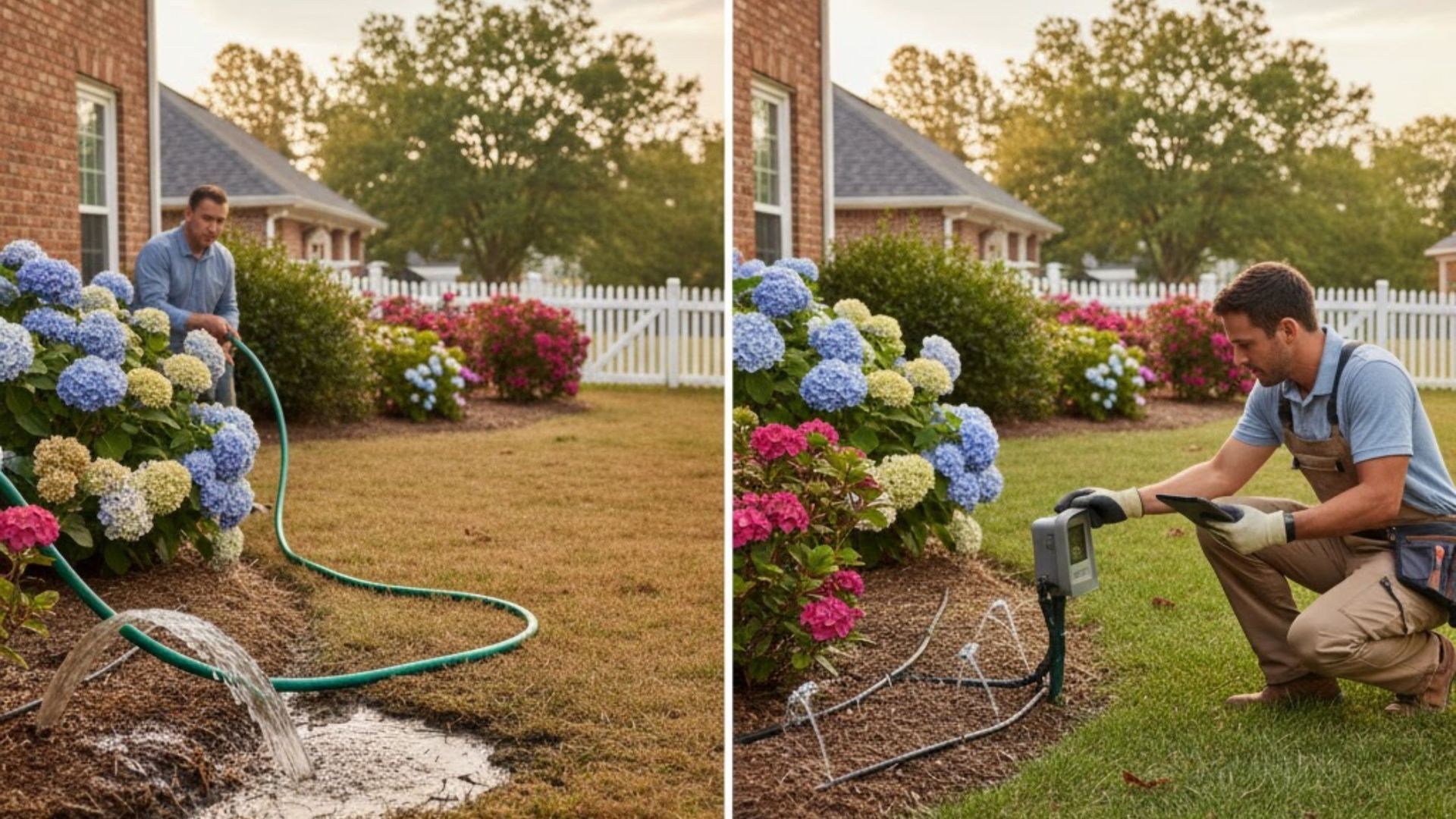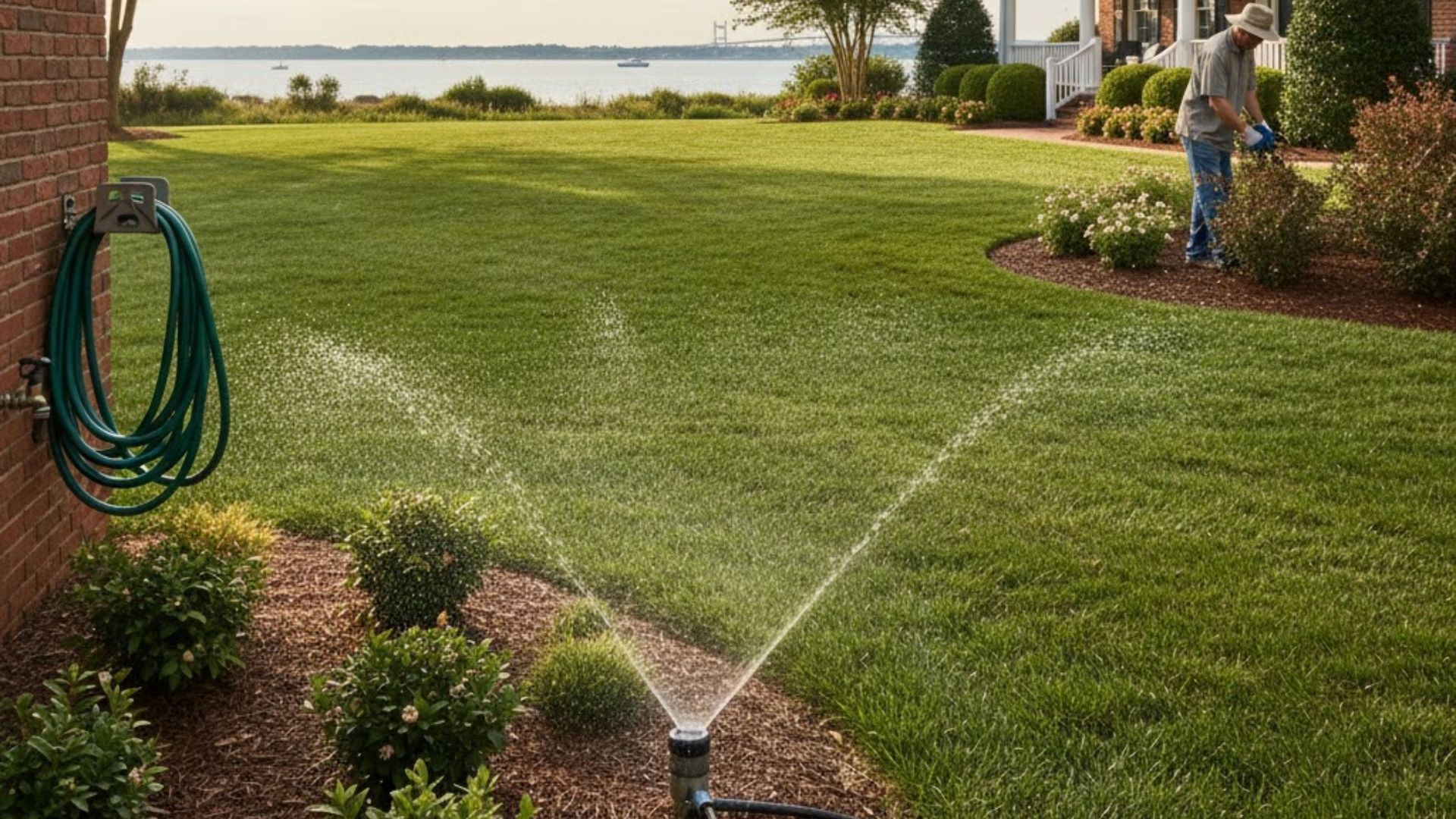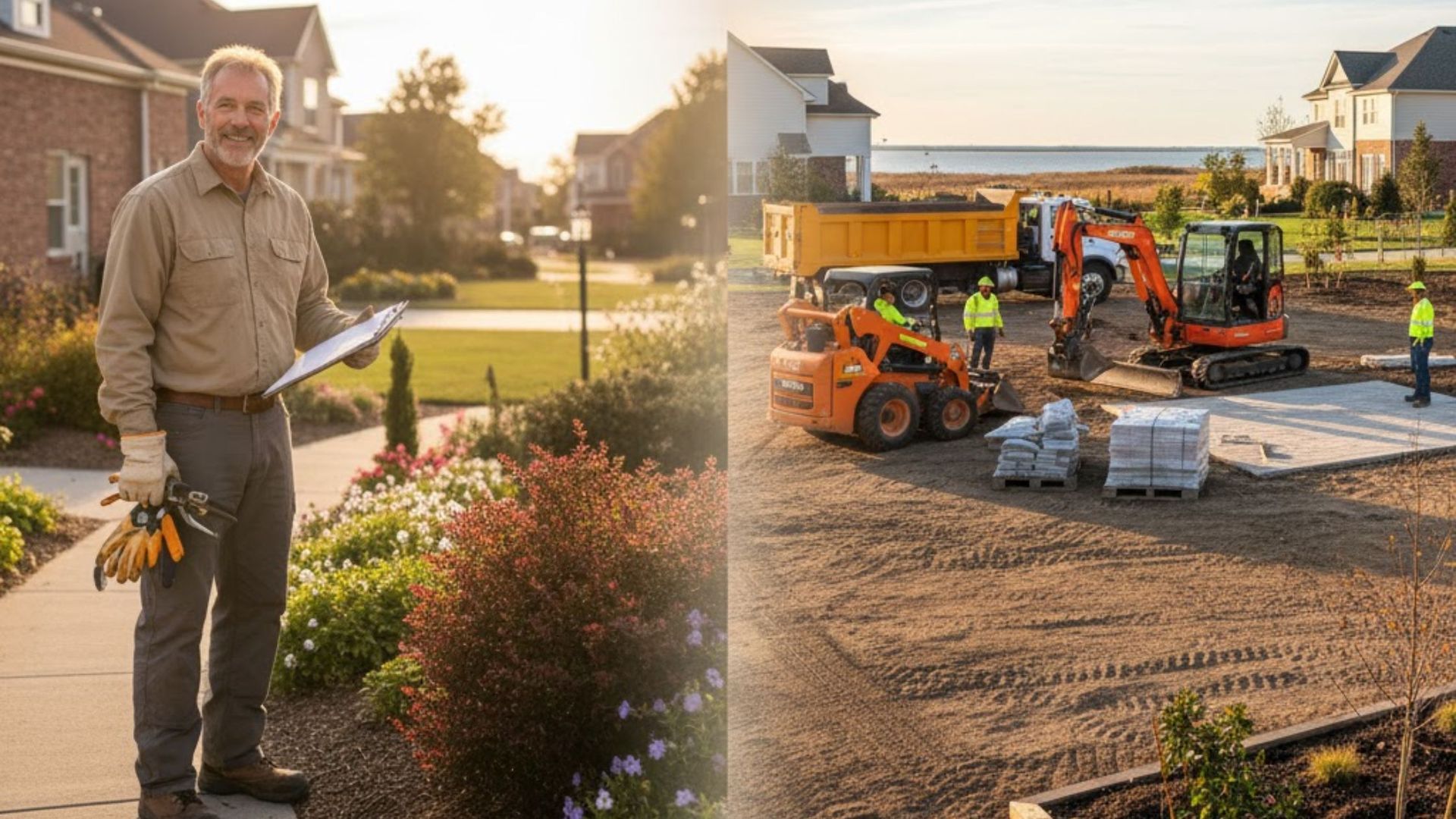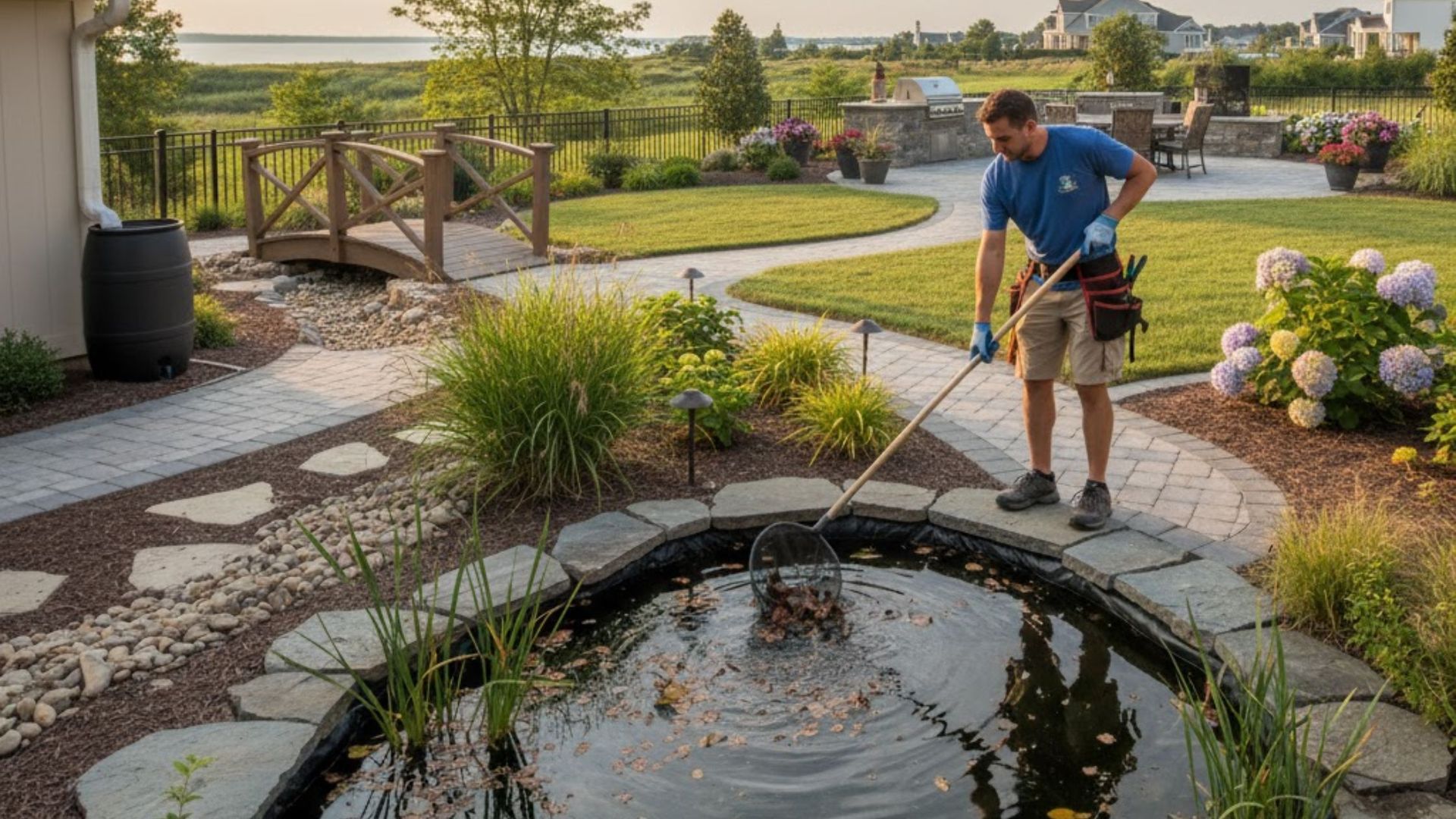Can Yard Grading Help Eliminate Standing Water and Mosquito Problems in Hampton Roads?

The joy of living in the beautiful Hampton Roads area, surrounded by water and history, often comes with a persistent, damp challenge for homeowners. That challenge is the inevitable pooling of water after heavy rains, leading to soggy lawns, foundation stress, and unwelcome swarms of biting pests. If you have ever felt like your yard is perpetually marshy, or if the sound of buzzing insects dominates your summer evenings, you are likely dealing with a fundamental issue in how your property manages runoff. Correcting this is not just about aesthetics; it is a critical safeguard for your home’s structural integrity and your family’s health. Fortunately, there is a definitive solution that addresses these problems right at the source, and that solution is professional Yard Grading Hampton Roads. This process involves carefully reshaping your landscape to ensure water is channeled safely away from vulnerable areas, transforming a wet nuisance into a healthy, dry, and usable outdoor space.
Why is standing water so common in properties across the Tidewater region?
The frequency of standing water and drainage failure in this specific part of Virginia is not random; it is deeply rooted in local geography and climate. This coastal region, known for its proximity to the Chesapeake Bay and the Atlantic Ocean, faces a unique combination of environmental factors that make effective drainage a complex engineering task. Understanding these underlying causes is the crucial first step toward implementing a permanent and effective fix for a soggy property. Homeowners must recognize that solutions used inland often fall short when applied here.
The area is characterized by a generally flat topography, which naturally restricts the speed and direction of surface water flow. When rain falls, gravity has a minimal natural slope to work with, meaning water often lingers instead of quickly running off. This lack of natural elevation change necessitates intentional, engineered slopes to achieve reliable drainage. Without this critical design element, water settles into the lowest available spots, leading to pooling and saturation.
The Unique Geology of Coastal Virginia
A primary factor contributing to drainage issues is the region’s proximity to sea level and the geology of the land itself. This coastal environment features a naturally higher water table, which represents the saturated level of subsurface soil and rock. When heavy precipitation occurs, the ground is already nearing full saturation, leaving very little capacity for the new rainfall to infiltrate the soil layers.
This elevated water table means that the soil acts like a nearly full sponge, unable to absorb additional moisture efficiently. Instead of draining downward, the water remains trapped near the surface, exacerbating pooling problems. This phenomenon is particularly challenging because it means even a moderate rain event can lead to significant surface water issues. Tidal forces and sea level rise further complicate matters, occasionally backing up municipal stormwater systems and preventing adequate outflow.
The Problem of Compacted Clay Soil
Many homes in the Hampton Roads region are situated on land that contains significant deposits of dense, heavy clay soil. Clay particles are microscopic and pack together tightly, drastically reducing the soil’s permeability, which is its ability to absorb and transmit water. This characteristic means that when water hits the surface, it has an incredibly difficult time seeping into the ground.
Compacted clay acts as a natural barrier or hardpan, forcing surface water to remain on top of the lawn or yard area. This dense soil composition, often worsened by construction traffic and heavy equipment during development, significantly slows down the infiltration rate. Amending this soil with organic matter, compost, or biochar can certainly help its long-term health, but structural drainage problems caused by grading issues are usually too severe to be resolved by soil amendments alone.
High Water Table Challenges
The term high water table is frequently heard in conversations about local property management. This condition describes groundwater levels that are very close to the surface, sometimes only a few feet below the turf. During wet periods, or following prolonged rainfall, the water table naturally rises. This reduces the depth of unsaturated soil available to accept new water from above.
When the water table is high, solutions like deep dry wells or French drains need careful planning to ensure they function correctly. If the end point of a drainage system is below the current water table, the system will become saturated and ineffective. It is a constant battle against the natural saturation levels of the subterranean environment, which is why precision in elevation planning is so critical when seeking a standing water fix VA.
What Exactly is Yard Grading and How Does it Work?
Yard grading, also commonly referred to as lawn leveling or ground leveling, is the foundational landscape process of changing the slope of the land around a structure or across a property. It is not just about making the land flat; rather, it is about deliberately creating a specific, subtle incline. This incline is engineered to direct surface water runoff via gravity along a designed path toward an appropriate discharge point, such as a street drain, a drainage ditch, or a designated collection system.
The core principle behind successful grading is ensuring that the earth’s surface slopes continuously away from the home’s foundation. This is the single most important defense a property can have against water intrusion and damage. Without this continuous downward slope, water pooling near the foundation can seep into basements, crawl spaces, and the concrete itself, leading to costly and stressful structural issues.
Yard grading is the most effective proactive step a homeowner can take to protect their property investment. The process involves sophisticated calculation and earthmoving equipment, as the measurements must be precise to ensure the slope is effective but not so steep that it causes erosion. By carefully manipulating the terrain, a professional team fundamentally alters the way your property interacts with rainwater.
The fundamental goal of Yard Grading Hampton Roads is to permanently alleviate areas of water pooling. The skilled adjustment of the land's elevation profile ensures that water naturally moves away from the home and disperses properly across the landscape. This eliminates stagnant zones that cause turf death and structural weakness, creating a much healthier environment.
The Critical Slope: Protecting Your Home's Foundation
The foundation of your home is constantly under threat from hydrostatic pressure—the force exerted by water trapped in the surrounding soil. If the ground slopes towards your house, every rainfall essentially pushes water directly against your foundation walls. Proper grading creates an optimal gradient that relieves this pressure entirely.
Experts recommend a minimum slope, or pitch, of at least two to three percent away from the structure. This translates to a drop of approximately six inches of elevation over the first ten feet extending out from the foundation. This gentle but deliberate pitch is often invisible to the naked eye but is incredibly powerful in managing runoff. It ensures that the bulk of the surface water is immediately guided away from the house perimeter.
Failing to maintain this proper slope is a direct invitation for water problems. Even small depressions or dips near the foundation can collect water and compromise the protective seal and materials of the structure. The consistent moisture leads to soil expansion and contraction, which can cause cracking and shifting in the foundation over time, demanding expensive repairs.
Grading for General Landscape Health
Beyond protecting the house itself, effective yard grading significantly contributes to the overall health and usability of the entire property. Soggy, wet lawns are not merely inconvenient; they can lead to widespread plant and turf problems. Turfgrass that is constantly waterlogged struggles to breathe and access necessary oxygen, often resulting in dead patches, disease, and a muddy, unusable landscape.
A properly graded yard ensures that water flows consistently, preventing the formation of low spots where water collects indefinitely. This helps maintain consistent soil moisture levels, which is ideal for a lush, green lawn and healthy ornamental plants. When your property is adequately graded, it is more resistant to erosion because water moves across the surface at a manageable speed, preventing the washing away of mulch, topsoil, and essential nutrients. This makes a huge difference in having a vibrant outdoor space rather than a perpetually damp one.
The Hidden Threat: Linking Standing Water to Mosquito Infestation
The presence of standing water in your yard is not just a cosmetic or structural concern; it is a serious biological one. Stagnant water is the single most crucial requirement for the reproduction and population boom of mosquitoes, particularly the highly aggressive and common Aedes albopictus, or Asian Tiger Mosquito, found throughout the Hampton Roads region. Eliminating standing water is the primary line of defense in mosquito prevention grading.
A female mosquito only requires the tiniest amount of standing water—often just a thimble-full—to lay her batch of eggs. These eggs develop rapidly, typically hatching into larvae within 24 to 48 hours. The entire life cycle, from egg to biting adult, can take as little as seven to ten days in warm weather. This short reproduction cycle means that any persistent puddle, even one that lasts for just a week, can be responsible for releasing thousands of mosquitoes into your immediate environment.
The Mosquito Life Cycle and Breeding Habitats
Mosquitoes undergo four distinct developmental stages: egg, larva, pupa, and adult. The first three stages are entirely aquatic, meaning they must occur in water. The presence of water is not optional; it is mandatory for their survival and development. Larvae, often called "wrigglers," feed on organic material in the water, and pupae, or "tumblers," mature before emerging as winged adults.
When water is stagnant, it provides an undisturbed environment rich in microorganisms, creating the perfect nursery for these pests. Yard grading directly attacks this cycle by ensuring that water is never stagnant. By continuously draining water and preventing pooling, the grading process eliminates the habitat needed for the eggs to hatch and the larvae to mature.
The Asian Tiger Mosquito is particularly troublesome because it breeds successfully in very small containers and highly shaded areas, which are common in residential landscapes. This species is known for being an aggressive daytime biter, making outdoor activities unpleasant even when other species are less active. Controlling the environment to eliminate stagnant water is the most effective control method against this pervasive pest.
Mosquito-Borne Diseases in Coastal Virginia
While mosquitoes are a general nuisance, biting and causing discomfort, they are also vectors for several serious pathogens, which poses a substantial public health risk. The Virginia Department of Health monitors several mosquito-borne illnesses that are present in the region. These diseases include:
- West Nile Virus (WNV): The most commonly transmitted mosquito-borne disease in the continental United States, often presenting mild or no symptoms, but potentially causing severe neurological illness.
- Eastern Equine Encephalitis (EEE): A rare but very serious disease that can lead to brain infection and has a high fatality rate, making its prevention critical.
- La Crosse Encephalitis (LACE): Primarily found in the Appalachian region but monitored in Virginia, often affecting children and causing fever and headache.
- Saint Louis Encephalitis (SLE): An illness that can cause flu-like symptoms or, in severe cases, neuroinvasive disease, posing a risk to older adults especially.
Taking proactive steps like correcting poor drainage and ensuring proper Yard Grading Hampton Roads is therefore a vital component of community health and pest management. Reducing the mosquito population by eliminating their breeding grounds drastically reduces the potential for disease transmission to family members and pets.
Designing a Comprehensive Drainage Strategy Beyond Simple Sloping
While the initial grading that slopes the ground away from the foundation is the essential first step, a comprehensive solution for properties in the Hampton Roads area often requires integrating several engineered drainage elements. Due to the high water table and heavy clay soils, relying solely on surface runoff may not be enough to manage the substantial volume of precipitation common in this coastal climate. A professional drainage strategy combines grading improvements with targeted systems to handle both surface water and subsurface water challenges effectively.
These additional systems are designed to capture excess water, speed up its removal, or facilitate its absorption into the ground away from the structure. They work in concert with the overall grading design to create a robust and reliable defense against saturation and pooling. This holistic approach ensures resilience, even during periods of prolonged and intense rainfall, providing multiple layers of protection.
Engineered Solutions: French Drains and Dry Wells
One of the most widely used and effective subsurface drainage tools is the French drain. This system involves digging a trench in the problem area and lining it with permeable fabric before laying a perforated pipe. The pipe is then covered with washed gravel and, typically, topped with soil and turf. The drain collects both surface water that seeps down and shallow groundwater, channeling it through the pipe to a safer discharge point far away from the house.
French drains are essential where grading alone cannot completely prevent water saturation, such as along property lines where runoff from neighbors is a factor, or in particularly low-lying areas. The gravel acts as a catchment area, and the pipe ensures the collected water is efficiently transported to a suitable outlet. The correct size and slope of the trench are calculated meticulously to handle peak water flow without becoming overwhelmed.
For properties with localized, severe pooling issues, a dry well can provide an effective collection point. A dry well is an underground structure, often a pre-formed chamber or a large hole filled with stone, designed to collect significant volumes of water from a French drain or downspout and slowly disperse it back into the surrounding soil. This is particularly useful in areas where an obvious downhill exit point, like a street curb or ditch, is unavailable, allowing water to infiltrate slowly deeper into the soil where it can be absorbed.
Integrating Water Absorption: Rain Gardens and Swales
Modern landscape architecture increasingly utilizes nature-based solutions to manage stormwater runoff in an environmentally responsible way. Two highly effective techniques that work in partnership with grading are drainage swales and rain gardens. These features are designed not just to move water, but to cleanse it and allow it to infiltrate the ground naturally, mitigating the impact of heavy runoff.
Drainage swales are broad, shallow depressions or channels created by grading work that are specifically pitched to convey water across a property. Unlike sharp ditches, they have gently sloping sides and are often planted with turf or resilient ground cover. They guide water from high-risk areas toward a safe outlet or, ideally, toward a rain garden. Swales are particularly useful on larger lots to manage significant volumes of water and prevent accelerated erosion across the entire yard area.
A rain garden is a depressed area in the landscape planted with deep-rooted, water-tolerant native plants. It is engineered to capture runoff from the roof, driveway, or lawn, holding the water temporarily while allowing it to slowly soak into the ground. These gardens are excellent wet yard solutions Hampton Roads because they increase the permeability of the dense clay soil in a controlled location, reducing the total volume of water burdening the general lawn area and providing a beautiful habitat for beneficial insects and pollinators.
Steps Professionals Take to Correct Poor Yard Drainage
The process of correcting poor grading and drainage is a complex project that requires specialized knowledge, equipment, and local experience. It is a multi-stage operation that must be executed with precision, as slight errors in elevation can lead to new, unexpected pooling problems. Hampton Roads Irrigation & Landscape follows a methodical approach to ensure that the final solution is durable, effective, and compliant with local regulations.
The first step is a thorough site assessment, during which experienced technicians use laser transits and other measuring tools to map the property’s current elevation, identifying all high points, low points, and existing drainage flow patterns. This evaluation also considers the location of underground utilities, septic systems, and the home's foundation to avoid damage during the earthwork phase. This meticulous planning dictates the entire drainage strategy, minimizing guesswork.
The planning stage involves creating a detailed blueprint that specifies the exact slope changes (the grade), the location of any required subsurface drainage systems like French drains, and the final destination for the managed runoff. Calculations are made to determine the volume of water the system must handle, ensuring the design can accommodate peak rainfall events. The result is a highly customized plan tailored to the unique conditions of the property, addressing all identified sources of water issues.
The next stage is the physical grading and earthwork. Heavy machinery is brought in to move soil, remove existing topsoil, establish the correct sub-grade slope, and then replace the topsoil, often amending it for better permeability. Trenches for drainage systems are excavated, pipes and gravel are installed, and the final surface is meticulously shaped to the exact specifications of the plan. This is the most labor-intensive phase, requiring skilled equipment operation to achieve the precise final contours and guaranteed flow.
The final touches involve restoring the disturbed areas, which often includes laying new sod, seeding, or replanting ornamental beds. Post-installation monitoring is essential to confirm that the new system is functioning as designed. This includes testing the drainage during a rain event to ensure water follows the intended path and there is no pooling. Our team at Hampton Roads Irrigation & Landscape ensures that every project is completed to the highest standards, protecting your home and enhancing your property's value.
Maximizing Prevention: Other Measures to Deter Pests
While yard grading offers the most powerful long-term solution by eliminating large areas of standing water, comprehensive mosquito control also requires attention to smaller, less obvious breeding sites. Mosquitoes, especially the Asian Tiger Mosquito, are known as "container breeders," meaning they readily use any item that collects water around the house. Integrating simple property maintenance habits with the structural improvements achieved through grading greatly enhances pest prevention.
A crucial and often overlooked breeding ground is the gutter system. Clogged gutters, choked with leaf litter, pine needles, or granules from shingles, create perfect, sheltered troughs of stagnant water right above your head. Even if your yard drains perfectly, these small overhead nurseries can sustain a thriving mosquito population. Regular inspection and cleaning of all gutters and downspouts are essential steps in eliminating these high-altitude breeding sites, and we recommend checking them quarterly.
Furthermore, any container that can hold water for more than a week must be either removed, drained, or altered. This includes items such as:
- Old tires, which are notorious mosquito breeding sites.
- The saucers beneath flowerpots, which collect runoff.
- Tarps or plastic sheeting left to pool water in the center.
- Unused children’s toys, buckets, or wheelbarrows.
- Bird baths, which should be changed and scrubbed at least once per week.
If you are considering working with us, we encourage you to review our reviews to see how our clients have combined these maintenance tips with professional drainage solutions for maximum effectiveness and peace of mind. Taking these small, routine actions complements the major work of professional grading by removing all possible secondary habitats.
You should also look at the vegetation immediately surrounding your home. Dense, shaded shrubbery and tall grass can create areas of persistent dampness and reduced airflow. Mosquitoes are most active during dawn and dusk and rest in cool, damp, shaded environments during the day. Trimming back overly dense plants and clearing away leaf litter helps to dry out these dark resting spots, making your property less hospitable for adult mosquitoes.
Long-Term Benefits of Investing in Site Correction
The decision to undertake professional yard correction is a significant investment that yields multiple critical returns far beyond simply eliminating puddles. It is a fundamental improvement that secures the value and longevity of your home, making it a sound financial decision. Proper grading solves problems that, if left unaddressed, only become more severe and exponentially more expensive over time.
Protecting Structural Integrity
As noted earlier, the primary benefit is the long-term preservation of your home's foundation. Water damage is insidious; it often works slowly and hidden from view. By consistently directing water away from the foundation walls, grading prevents hydrostatic pressure buildup that leads to cracks, basement leaks, and crawlspace dampness. Preventing this moisture intrusion significantly lowers the risk of structural compromise and the need for major foundation repair, a process that can easily cost tens of thousands of dollars.
Beyond the foundation, proper drainage protects all hardscape elements on your property. In the coastal Virginia environment, heavy clay soils expand and contract dramatically when wet and dry. This movement, known as soil heave, can damage patios, walkways, and retaining walls that are not properly engineered to handle the constant moisture fluctuation. Good grading minimizes soil saturation, stabilizing the ground beneath your expensive outdoor structures and preserving their intended appearance.
Controlling Erosion
In addition to preventing structural damage, well-executed grading is a powerful tool for environmental stewardship on your property. When water rushes across an improperly sloped lawn, it carries away valuable topsoil and landscape materials, causing erosion. You see this manifest as washed-out mulch beds, ruts in the lawn, or silt deposits on driveways and sidewalks, all of which detract from the neat appearance of your home.
Corrective grading implements gentle, consistent slopes and often incorporates features like drainage swales to control the velocity and volume of runoff. By slowing the water and guiding it along designated paths, the grading process maintains the integrity of your soil. This protects the nutrient base of your lawn and garden beds, reducing the need for continuous soil replacement and repair and promoting better plant life.
Enhancing Usability and Curb Appeal
The practical benefits of a dry yard are immediately apparent. A well-graded property means you and your family can enjoy the outdoors sooner after a rain event. No more soggy patches, mud pits, or unusable sections of the lawn that limit recreation and entertaining. This translates to more enjoyable outdoor living, less mud tracked into the house, and a yard that is consistently accessible for recreation and gardening, significantly increasing usable space.
Moreover, a well-drained yard looks healthier and more vibrant. When the turf is not constantly struggling with saturation, it grows thicker and greener, free from the diseases and discoloration caused by constant dampness. A dry, lush lawn and secure foundation enhance your home’s curb appeal, which is a significant factor in property valuation should you decide to sell. If you are ready to begin the process of securing your home and transforming your landscape, please contact us today for a consultation.
Why Experience Matters When Addressing Wet Yard Solutions Hampton Roads
When confronting the unique environmental challenges of the Tidewater region, choosing an experienced and specialized professional is non-negotiable. The high-stakes environment—where the margin for error is small due to the combination of coastal conditions, dense clay, and high water tables—demands expertise specific to this geography. A general contractor or amateur landscaper may lack the detailed knowledge required for precise execution in these conditions.
A specialist in local wet yard solutions Hampton Roads understands that the grading calculation must account for the density of local clay soils. They know how to properly compact the sub-grade and ensure that the final layer of topsoil maintains the slope without settling and reversing the grade over time. This local knowledge is the difference between a temporary fix that fails after a year and a permanent solution that protects your home for decades.
Furthermore, an experienced drainage professional is familiar with the necessary permits and regulatory compliance concerning stormwater runoff and discharge in local municipalities. They know the correct methods for directing water to municipal drainage points or for creating on-site absorption systems that adhere to environmental standards. For instance, knowing the typical water table depth in a Chesapeake neighborhood versus a Virginia Beach location is critical for designing an effective dry well or French drain. When you invest in expert service, you are investing in peace of mind. To review our history of successful projects, you can visit our page on Yard Grading Hampton Roads.
Frequently Asked Questions About Yard Drainage
Here are some common questions homeowners in the area ask about how grading can resolve persistent water issues on their properties.
Does adding sand to my clay soil help with drainage?
While sand can initially appear to improve drainage, mixing it into heavy clay soil is often counterproductive and can make the problem worse. When sand and clay are combined without a large amount of organic matter, they can create a mixture similar to concrete, which is even less permeable. Professional solutions focus on structural changes like grading and engineered drains rather than surface-level soil amendments alone.
How much does it cost to re-grade a yard?
The cost of a yard grading project varies significantly based on the size of the area, the current slope, the soil type, and the complexity of the final design, including the installation of any supplemental systems like French drains or swales. Because it involves significant earthmoving, planning, and professional equipment, it is a substantial investment. We provide transparent, detailed quotes after a thorough, on-site assessment to give you an accurate idea of the necessary investment.
Can I install a French drain myself?
While the concept of a French drain is simple—a trench with a pipe—the execution is highly complex, especially in the Tidewater region. Improperly sloped trenches, incorrect pipe placement, or poor connections can render the system useless or, worse, cause water to back up toward the foundation. Given the high stakes of foundation damage, this project is best left to licensed professionals who specialize in Hampton Roads Irrigation & Landscape services.
Will correcting my yard grading impact my neighbor's property?
Proper and ethical grading should never negatively impact adjacent properties. Drainage professionals adhere to local "common enemy" laws concerning surface water, ensuring that any water directed off your property flows into established public storm drains, ditches, or swales, or is safely absorbed on-site. The goal is responsible water management that respects both your property and that of your neighbors.
How do I know if my foundation issues are caused by poor grading?
Common signs that poor grading is damaging your foundation include: water pooling within ten feet of the house after rain, cracks in your basement walls or floor, persistently damp or moldy crawl spaces, or noticeable soil erosion washing materials away from the foundation perimeter. These symptoms indicate water pressure and are a strong signal that corrective grading is urgently required before minor issues become major structural failures.
Final Thoughts on Securing Your Coastal Home
Living in this beautiful region means accepting the challenge of managing a unique, high-moisture environment, but that does not mean you have to tolerate a soggy yard and a constant mosquito nuisance. The power of professional Yard Grading Hampton Roads is its ability to provide a permanent, structural solution that addresses the root cause of water stagnation. By meticulously reshaping your terrain and, where necessary, integrating advanced drainage systems, you create a defensive shield for your most valuable asset: your home. This process not only banishes standing water and the biting insects it harbors but also ensures the structural longevity of your foundation. Our dedicated team at Hampton Roads Irrigation & Landscape is here to bring our specialized local expertise to your property, turning your water-logged worries into a dry, healthy, and inviting outdoor sanctuary. Get the relief you deserve and protect your home with the definitive Yard Grading Hampton Roads solution.
